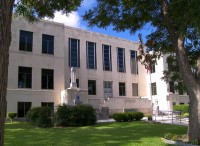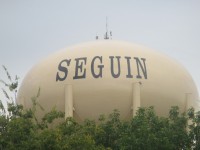-
Assisted Living Costs in Seguin, TX
Cost for a single bedroom in Seguin runs between $2,400 to $2,600 a month.
Availability is almost guaranteed but you can request information online by filling out the form to the right or call us at 855-363-2002 for a no-cost, in-depth assessment of your senior care needs. Our compassionate advisors can help you find the best Seguin assisted living facilities for your unique needs and budget.
The official website for the city of Seguin is http://www.seguintexas.gov/.
Cities near Seguin offering memory care options
Geronimo | Mc Queeney | Kingsbury | Marion | New Braunfels | Staples | Belmont | Prairie Lea | Fentress | Leesville | Cibolo -
Assisted Living Costs in Nearby Cities
* The costs above represent the AVERAGE monthly cost of assisted living for a one person bedroom in that city. -
Facts about Seguin
Seguin is also known as: Guadalupe County / Seguin city.
Seguin has been featured in movies like: The Great Waldo Pepper (1975).
And some of the notable people born here have been: Caleb Miller (american football player), Jesse Head (actor), Russell Erxleben (american football player), Cleveland Vann (american football player), and Roland Harper (american football player).
And featured attractions of Seguin: Los Nogales, Sebastopol, Texas Lutheran University, and Seguin Beauty School.
Seguin is represented by City Manager Mayor Don Keiland Council-Manager Carlos Medrano.
Seguin is a city in and the county seat of Guadalupe County, Texas, United States. The estimated municipal population in 2012 was 26,272.Seguin is one of the oldest towns in Texas, founded just sixteen months after the Texas Revolution. The frontier settlement was a cradle of the Texas Rangers and home to the celebrated Captain Jack Hays, perhaps the most famous Ranger of all.Seguin was the home of Dr. John E. Park, who experimented in construction using concrete made from local materials. The nearly 100 structures-the courthouse, schools, churches, homes, cisterns, walls, etc.-made up the largest concentration of early 19th-Century concrete buildings in the U.S. About 20 of them remain standing.The use of concrete largely ended when the railroad arrived in 1876, bringing cheap lumber and the equipment needed for brick-making. The town had five brickworks, and the wooden buildings of downtown were completely replaced with brick by the beginning of World War I.For almost 100 years, the town was dependent on the rich surrounding farmland and ranches. Then an oil boom came just as the Great Depression was taking down other towns and cities. Seguin could raise enough tax money to match the federal grants for 'make-work' projects. The New Deal transformed the city's public face with Art Deco style City Hall, Courthouse, Jail, and fountain, as well as storm sewers, sidewalks, and three swimming pools (one for Anglos, one for blacks, one for Hispanics). The town commemorated its centennial by opening Max Starcke Park, with a golf course, a pavilion, picnic tables and BBQ pits along a scenic river drive, and a curving dam that created one of the most beautiful waterfalls in Texas.To preserve some of the historic character of the town, Seguin became one of the state's first Main Street cities, and the downtown district was placed on the National Register of Historic Places. Fine homes by leading architects J. Reily Gordon, Solon McAdoo, Leo M.J. Dielman, Atlee B. Ayers, and Marvin Eickenroht dating from the late 19th century and the first half of the 20th century can be found on many streets. However the city does not have any officially designated historic residential districts.The post-war era also saw industrial development, with an electric furnace mini-mill turning scrap metal into construction products, a factory making electronic components for automobiles, and most recently a Caterpillar plant assembling diesel engines.
-
Population shifts in Seguin
-
Average temperatures in Seguin
Line in orange is average highs...line in blue is average lows.
Average rainfall in Seguin
Seguin Texas Assisted Living Facilities
Argent Court of Seguin
Nourishing meals are provided to residents, Kosher food is provided, a visiting podiatrist helps keep your feet healthy, the facility has staff that can administer insulin to manage diabetic needs, transportation is available for additional cost, the property is convenient to bus lines in the area, and respite care is offered.Other communities in Seguin
Nearby communities in other cities
Rio Terra Senior Living
Nutrient rich meals are provided to residents, they serve vegetarian food at Rio Terra Senior Living, a visiting podiatrist helps keep your feet healthy, residents can self manage their diabetes, staff is available help with your diabetes management, Rio Terra Senior Living can handle behavioral issues that residents may be inclined to, and respite care is offered.Sterling House of New Braunfels
Nutritious meals are provided to residents, Kosher food is provided, a dentist visits this location regularly, regular occupational therapy by a visiting therapist helps you stay active and engaged, the facility has staff that can help residents with insulin to manage diabetic needs, Sterling House of New Braunfels is close to major bus lines, and this community was built in 1997.New Haven Cibolo
Residents have Kosher food as a dietary option, there is a physician on call, caregivers at New Haven Cibolo can address potential disorientation presented by residents, caregiver employees can deal with any wandering issues residents may have, full tubs are available, hospice is an option available at this location, and aging in place allows residents to remain in one location as their care needs change.Esplanade Gardens
Vegetarian food options are available for all meals, licensed nurses are on staff to help you, physical therapy is handled by the physical therapist that makes regular visits to this community, caregiver staff can deal with any wandering issues residents may have, staff is trained to deal with any exit seeking behaviors that may need to be dealt with, the property has a nurse that is able to administer injectable medicine, and the community is licensed for 171 residents.Horizon Bay San Marcos
Tasty and wholesome meals are provided to all residents even those with dietary restrictions, the minimum allowable age of residents is 55, nurses are on staff, there is a doctor on call at all hours, the facility has staff that can help residents with insulin to manage diabetic needs, this community provides complimentary transportation, and hospice is an option available at this location.Elmcroft of Windcrest
Physical therapy is handled by the physical therapist that makes regular visits to this location, regular occupational therapy by a visiting therapist helps you stay active and engaged, caregivers at Elmcroft of Windcrest can address potential disorientation presented by residents, residents who drive will find parking available to them, complimentary transportation is at the disposal of residents, wheelchair accessible showers are available at this location, and aging in place allows residents to remain in one location as their care needs change.Inn At Los Patios
Kosher food is provided, the minimum allowable age of residents is 55, nurses are on staff, residents can self manage their diabetes, staff is available help with your diabetes management, this property is its own free standing building, and this community was built in 1990.New Haven Assisted Living Of Kyle
They serve vegetarian meals at New Haven Assisted Living Of Kyle, this community has been built specifically for the purpose of memory and dementia care, full-service medication administration is available, the staff speaks Japanese in the property, Mandarin is spoken at this location, the staff speaks Norwegian in the community, and American Sign Language is spoken at this location.If you represent a community listed above and would like to claim your listing, please contact us.











